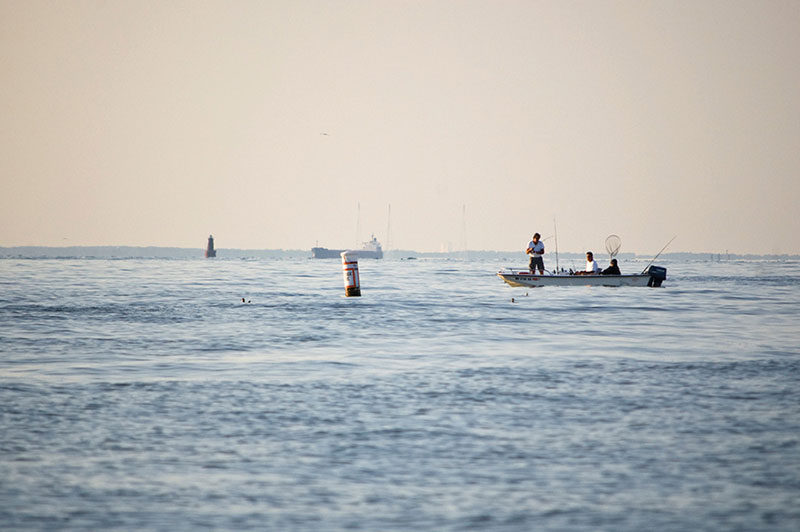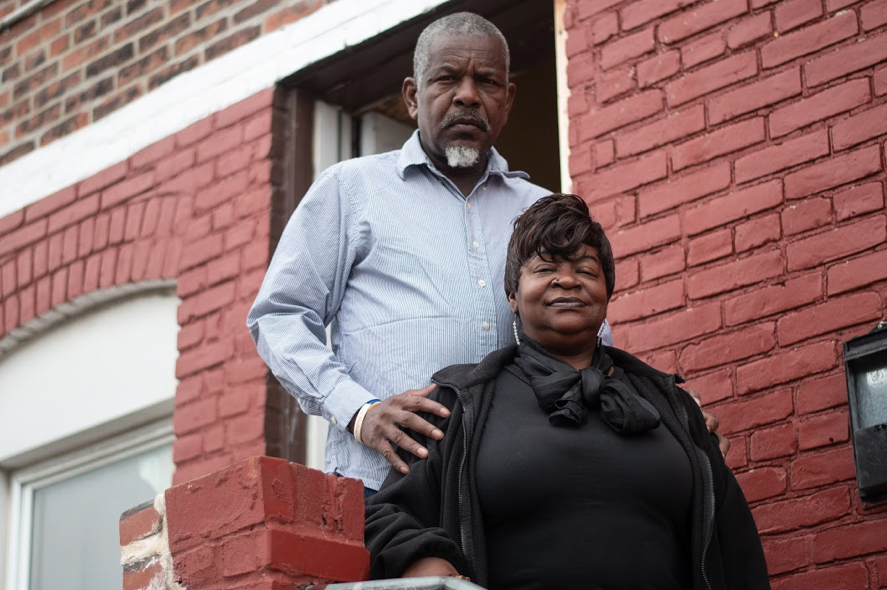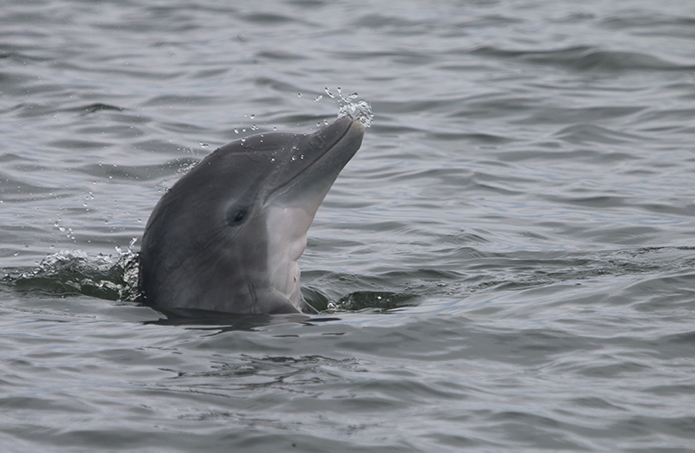By Karl Blankenship
Bay Journal
The year 2010 closed with the unveiling of a new Chesapeake Bay cleanup plan lauded by states, federal officials and environmentalists as the rigorous, concrete and enforceable plan that would finally deliver on the promise of a clean and healthy Bay.
Ten years later, a new decade has opened with the restoration effort unlikely to meet its deadline, the regional partnership mired in acrimony and threats of lawsuits — topped with questions about the U.S. Environmental Protection Agency’s willingness and ability to enforce its own cleanup plan.
“This has come to a boil now,” summed up Sen. Chris Van Hollen, D-MD, at a Senate hearing on Jan. 8. “This is a moment we need absolute clarity and an enforceable program to hit the targets in 2025.”
Hours later, Maryland Gov. Larry Hogan said he was directing state Attorney General Brian Frosh to initiate legal actions against Pennsylvania, citing the “obvious inadequacy” of its Bay cleanup plan, and against the EPA, which he said has “no intention” of forcing Maryland’s northern neighbor to do more.
Environmental groups are considering their own legal options.
And Van Hollen, joined by 19 other members of Congress, fired off a detailed letter to EPA Administrator Andrew Wheeler demanding “immediate steps to demonstrate EPA’s commitment and accountability to the restoration of the Chesapeake Bay.”
The boiling point came after the EPA released a review at the end of December acknowledging that Pennsylvania — the largest source of water-fouling nutrients in the Bay — had submitted a plan that fell far short of its cleanup goal. Nonetheless, the EPA declined to take any of the actions it had repeatedly threatened to impose to prod greater progress from the state.
Then, at a Jan. 3 meeting of the legislative Chesapeake Bay Commission, EPA Bay Program Director Dana Aunkst described the region’s 2025 cleanup deadline as “aspirational” and said that the Chesapeake Bay Total Maximum Daily Load is “not an enforceable document.” (See Can the EPA enforce the Chesapeake Bay’s ‘pollution diet’?)
The environmental community widely saw Aunkst’s comments as stepping away from the EPA’s commitment to provide a backstop for Bay goals, even as their frustration over Pennsylvania was mounting.
The Choose Clean Water Coalition, a network of more than 200 organizations, said it was “stunned” by the remarks. The Maryland League of Conservation Voters called it a “profoundly sad and disappointing moment in Bay history,” and the Chesapeake Bay Foundation said it “should put fear in the hearts of all who care about clean water.”
EPA Region III issued a follow-up statement insisting that it “remains steadfast in its commitment to helping our partners implement the Chesapeake Bay [cleanup plan] to ensure the Bay and local waters are protected and restored.”
But within days, Hogan was calling for legal action, and mounting concerns over the EPA’s commitment became a hot topic at a U.S. Senate Environment and Public Works Committee hearing.
“We need all the states and the EPA to step up and play their appropriate roles,” Maryland Environment Secretary Ben Grumbles told Van Hollen at the hearing. “Pennsylvania, in particular, has woefully fallen short … But the interstate umpire, the EPA [needs] to have the courage to step up and use the regulatory backstops that are available,” he added. “It is not an aspirational role. It is an enforceable TMDL.”
Years of backsliding
Though the problem has finally “come to a boil,” it has been simmering for years.
Starting in 1983, the states and the EPA have been promising to deliver a healthy Chesapeake. But they missed pollution reduction goals set for 2000, and then for 2010, by wide marks.
Recognizing that their largely voluntary efforts had failed, the state-federal Bay Program partnership in 2007 established a new cleanup deadline of 2025. The states and EPA began crafting a new, more enforceable cleanup plan: the Chesapeake Bay Total Maximum Daily Load, often called the Bay’s “pollution diet.”
The ultimate goal remained unchanged: clearing the Bay’s murky water and eliminating its oxygen-starved “dead zone.” The TMDL established the maximum amount of nutrients and sediment the Bay could receive from each state and major river and still achieve those clean water goals.
The TMDL also included an “accountability framework” in which states were to write plans showing how they would meet those goals. To keep efforts on track, states set interim two-year cleanup goals, which are evaluated by the EPA and reported to the public.
If states fell short, the agency could take a variety of actions, such as forcing even greater — and more costly — reductions from wastewater plants than states had planned; regulating smaller animal operations than normally covered by federal programs; withholding water grants; taking over state permit programs; or other actions.
In theory, the threat of those “consequences” — as EPA called them — would spur states to create new programs, provide more funding or establish new regulations to rein in pollution. That was particularly important for agriculture, an area over which the EPA has limited regulatory oversight.
Results have been mixed. Since 2010, the region has slashed discharges from wastewater treatment plans, which have enforceable permits. But, in all of the Bay states, pollution reductions from agriculture — the largest source of nutrients to the Bay — have been small. All states would need to ramp up their agricultural conservation programs to unprecedented levels to reach their goals.
Nowhere is the problem worse than in Pennsylvania, where the vast majority of nutrients come from its more than 30,000 farms. Annual pollution reductions from agriculture there would need to increase 67 times the rate achieved in the last decade.
In an updated cleanup plan released last year, Pennsylvania identified actions that would achieve only 75% of its 2025 goal for reducing nitrogen, the primary nutrient polluting the Bay. Even with that shortfall, the plan identified an annual funding gap of more than $300 million.
Years of budget tightening in the state have left programs without the basic staffing to implement or oversee Bay efforts — in fact, it hasn’t been able to spend all of the federal grant money it receives.
Sen. Gene Yaw, the chair of the state Senate Environmental Resources and Energy Committee, told a reporter from the Pennsylvania Capital-Star after a Jan. 8 Bay briefing that even if the state had $300 million more, “I don’t know that we’d have the wherewithal to spend it.”
EPA has been citing the state for lax programs and inadequate progress since 2011. While it has twice temporarily withheld grant funding, the agency has largely avoided using more forceful consequences set forth in its TMDL accountability framework, in part out of concern that it could trigger a backlash.
“The problem with Pennsylvania didn’t start with the new administration in Washington,” said former EPA Bay Program Director Nick DiPasquale. “It has been long festering, and I have to say that EPA is part of the problem.”
At the end of the Obama administration, the agency came close to ordering tighter discharge limits on wastewater treatment plants — a hugely expensive proposition — but ultimately didn’t, DiPasquale said. “I personally have thought for a long time that the only way to get Pennsylvania to comply with the TMDL is to sue them,” he added.
Enforcement opportunities
Lawyers are examining a number of options to spur greater action.
The most likely action — whether pressed by the EPA or others — is to put more pressure on regulated dischargers, such as wastewater treatment plants, industries and stormwater systems.
Like other TMDLs, the Bay plan limits discharges by permit holders, which is where the EPA has the most direct regulatory authority. For pollution sources without a permit, the TMDL counts on states to come up with plans and program that meet goals.
If that doesn’t happen, and downstream clean water standards are not met, the remedy under a TMDL is to further reduce discharges from regulated sources.
Most of Pennsylvania’s larger wastewater treatment plants have already been upgraded with technology that reduces nutrient pollution. Forcing them to do even more would be expensive and achieve little in the way of additional reductions.
Stormwater has become an increasing source of flooding for many communities in the Chesapeake region, and it carries pollutants into local waterways. Reducing pollution from stormwater in developed areas is often a complicated and costly challenge.
“It would be inefficient use of those dollars to do that,” said Rich Batiuk, former associate director for science with the EPA Bay Program Office. “But it would be intended to prompt the state legislators to set up a state cost-share program to help their farmers achieve millions of pounds of nutrient reductions at a lower cost.”
Indeed, an EPA analysis several years ago concluded that further upgrades to wastewater treatment plants in Pennsylvania would cost $1.2 billion but yield only 2.7 million of the more than 30 million pounds of nitrogen reductions needed by the state.
But investing just $80 million in the most cost-effective pollution-control practices on farms would yield a reduction of 5.5 million pounds. Greater investments would accomplish even more.
The hope is that the threat of imposing additional costly regulatory measures would spur the legislature to act by committing to fund more economical farm practices.
“You can start to ratchet down on any point source,” said Jon Mueller, vice president for litigation with the Chesapeake Bay Foundation. “And one of the things that you find is when you start to squeeze one source sector hard, there is pushback, and the pushback may come in the form of legislative change.”
Instead of increasing funding, the state’s Republican-controlled legislature has been cutting environmental programs over the years. The distribution of the state’s population complicates the problem even more. Half of Pennsylvania drains into the Bay, primarily through the Susquehanna River, but that portion of the state does not contain anywhere near half of its population. Philadelphia drains into Delaware Bay and Pittsburgh into the Ohio River. Crafting a solution for the Bay means finding a program that also wins political support from other regions of the state.
As a result, of the three major Bay states, Pennsylvania is the only one that lacks a significant cost-share program to help fund conservation practices on farms, even though it has the largest agricultural sector.
“While Maryland and Virginia have done their fair share, Pennsylvania’s legislature has dropped the ball by failing to enact legislation providing annual funding or agricultural conservation measures,” said Ridgeway Hall, an environmental attorney with a long history of working on Bay issues.
If the EPA fails to act, states or organizations could take it upon themselves to oppose any new discharge permits — or existing permits when they come up for renewal every five years.
“You could do that across the board in the commonwealth of Pennsylvania within [its part of] the Bay watershed,” Mueller said. “It’s not the ideal way to do this,” he added. “The agency can do this on its own and has said it would do.”
Progress or pushback?
Some worry that could spark a backlash and lead to widespread public opposition from sewer rate payers, especially because Pennsylvania doesn’t touch the Chesapeake.
Hall said that it’s best for the issue to be resolved through “diplomacy” rather than going to court.
“Sometimes you have to file a lawsuit to get people’s attention,” he said. “But you had better be careful [that] you understand whether it is going to get positive attention or negative attention.
“Litigation can be costly, time-consuming. It diverts resources and, perhaps most importantly, it gets people emotionally inflamed on both sides and burns bridges that sometimes take a long time, if ever, to rebuild.”
But he and others also said legal action — or the threat of it — could prompt action by the state without having to go to court.
Ann Swanson, executive director of the Chesapeake Bay Commission, an advisory panel consisting of state legislators from across the Bay region, said movement to address Pennsylvania’s shortfalls has begun, albeit slowly, but could be harmed if lawsuits push people into corners.
“We don’t need to be distracted by litigation right now,” she said. “We need to double down and pursue programs and funding that will deliver clean water. That is what we need, and we need it now.”
Further, she said, all of the states — not just Pennsylvania — need to come up with more funding to meet their agricultural goals.
A spokesman for Pennsylvania Gov. Tom Wolf said the governor has been trying to secure more environmental funding, and a lawsuit would not help those efforts.
“Instead of protracted litigation that will take resources away from our efforts to improve water quality in the watershed and undermine the partnership that has helped make progress, Gov. Hogan’s time would be better spent convincing his Republican counterparts in Pennsylvania to support Gov. Wolf’s plan,” said spokesman J. J. Abbott.
And while environmental groups generally supported Hogan’s threat of legal action, Waterkeepers Chesapeake and the Lower Susquehanna Riverkeeper issued a statement blasting him for not doing enough.
Specifically, they cited the state’s recent proposed settlement with Exelon Generation Co. over impacts caused by Conowingo Dam on the Susquehanna, the Bay’s main tributary in Pennsylvania.
Originally, the state had sought $172 million a year from the company to reduce upstream nutrient and sediment pollution, but its settlement secured only $19 million over 50 years.
“Why is Gov. Hogan willing to sue Pennsylvania and the EPA to force them to live up to their commitments — but happy to let Exelon, a private utility, off the hook?” asked Betsy Nicholas, executive director of Waterkeepers Chesapeake.
With growing tensions and a looming 2025 deadline, some wonder about the future of the 37-year-old Bay Program partnership.
“The partnership is known for working through very difficult, very passionate and very challenging moments,” Swanson said. “And we are in one of those moments right now.”






Recent Comments